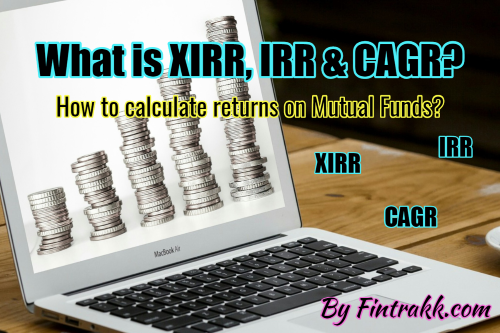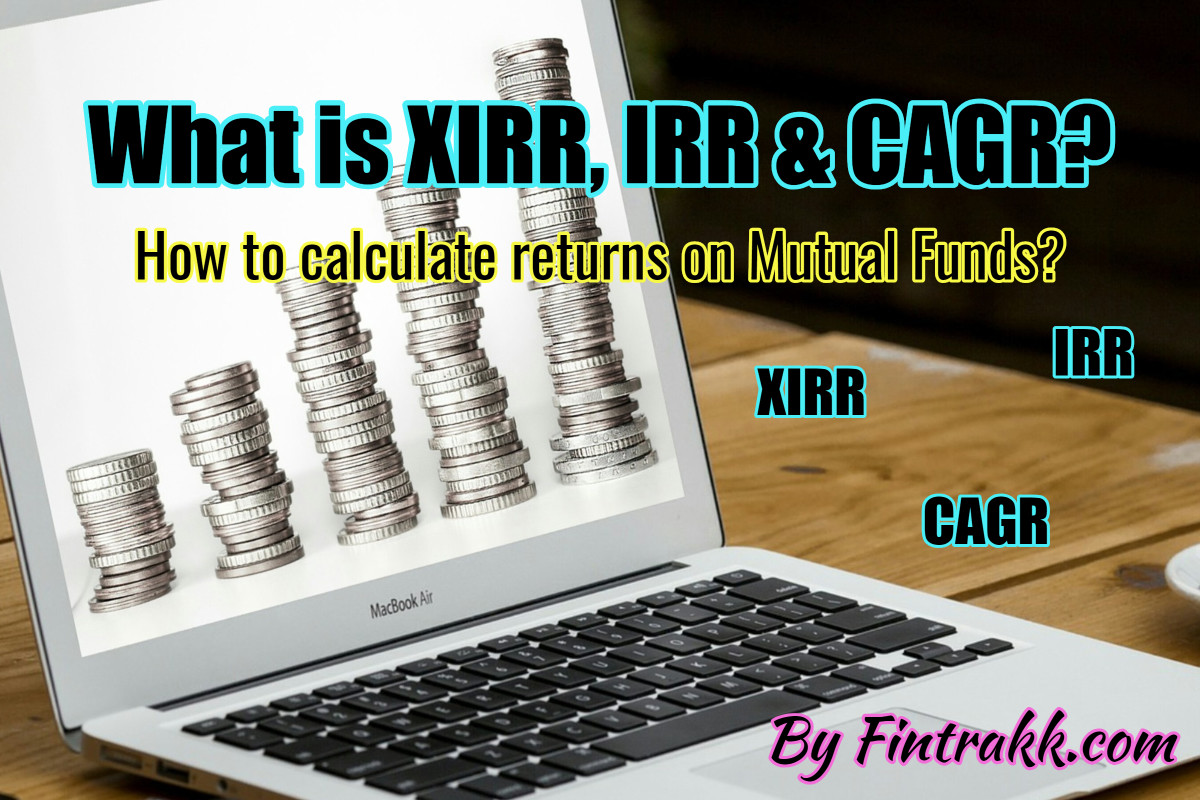If you are an investor in mutual funds, when you go to your dashboard you will see returns on your mutual fund investments. The returns are expressed in terms of XIRR. With mutual funds we hear about various terms like XIRR, IRR or Internal Rate of Return and CAGR. Do you wonder what is XIRR, IRR or CAGR? In this post, let’s have a look at XIRR meaning and IRR Meaning and how XIRR can be used to calculate returns on mutual funds.
In most of the mutual funds, dashboard is very simple. It shows you how much you invested, what is the current value of the investment and what is the return.
One of the Frequently asked question from investors is how do you calculate this return. So, we thought of writing this post explaining them how the return is calculated and also look at alternate ways of calculating mutual fund returns.
What is XIRR? Meaning
XIRR refers to Extended Internal Rate of Return. This is the methodology used for calculating returns on investments where multiple transactions happen at different times. It is a variant of IRR and takes care of use cases when your cash flows are not periodic.
XIRR: Calculate Returns for mutual fund investments
XIRR is a great function for calculating returns if your cash flows (investments or redemption) are distributed over a period of time. Talking about Mutual funds, if you invest in SIP or invest through lump-sum or redeem through SWP or lump sum route, XIRR proves quite helpful. It calculates a consolidated return considering these scenarios and your investment and withdrawals timings.

How to calculate XIRR?
You can calculate XIRR easily by using Excel. Excel has an inbuilt function for the user for calculating XIRR.
Excel Formula:
XIRR (values, date, Guess)
Steps to calculate XIRR in Excel:
- You need to enter all your transactions in single column. All your outflows including investments, purchases shall be market negative and all your inflows i.e. redemptions shall be marked positive.
- Now, you need to add the corresponding transaction date in the next column.
- You need to specify the current value of your holding and present date in the last column.
- Now, be ready to apply XIRR function in excel i.e. XIRR (values, date, Guess). The next step is to select values and date columns. The Guess parameter in the formula is optional (if you don’t put any value here, Excel will take up value of 0.1).
Here is a simple video which explains XIRR calculations:
Calculating XIRR for Geeks:
So, if you are geek and want to understand XIRR more in detail, read this small note from Microsoft or this small read up
Difference between IRR and XIRR:
Next question, that frequently comes to our mind is why use XIRR, why not IRR? Well, IRR or Internal rate of return can be used for the majority of investments only place where XIRR can be more useful is when your transactions are not equally spaced in time. If your transactions are equally spaced.
How to calculate IRR or Internal Rate of Return?
Here is a simple video which explains how to calculate IRR:
Can we use CAGR instead of XIRR?
Another common metric that is used to calculate the returns of investment in mutual funds is Compound Annual Growth Rate (CAGR). This displays how much does the wealth of a person grew in a specific period of time. You will see a lot of mutual funds quoting their returns in CAGR. We can use it for calculating our returns while it’s simple to calculate CAGR for a fund but calculation for personal investments seems a bit difficult and tricky.
Many investors consider absolute returns to analyze investment performance. But, it doesn’t take into account time value of money. Whereas CAGR considers the period when you stay invested and help you factor out the fluctuations in that particular horizon.
Compound Annual Growth Rate or CAGR= ((Ending Amount/Beginning Amount)^(1/No. of Years))-1
Example: If you have a monthly SIP of Rs.10,000 for a period of 3 years. This means, you have invested your money in 36 instalments. At the completion of 3 years period, your financial portfolio value shall be Rs. 400,000. Now, if you wish to know returns on your portfolio, you shall have to calculate CAGR for 35 months, 34 months, 33 months for different investments that you had made. Hence, this entire calculation seems quite complicated from individual perspective.
So, XIRR makes this quite simple and easy by calculating iteratively one return for all your investments. CAGR is crucial while selecting a mutual fund. But, XIRR looks to be a better choice for evaluating returns on mutual fund investments.
Now, you know what is XIRR, IRR and CAGR. You have also learnt how to calculate returns on your mutual fund investments. XIRR naturally might be a simpler way to go in practical life. Do share your valuable feedback and queries on the same.

